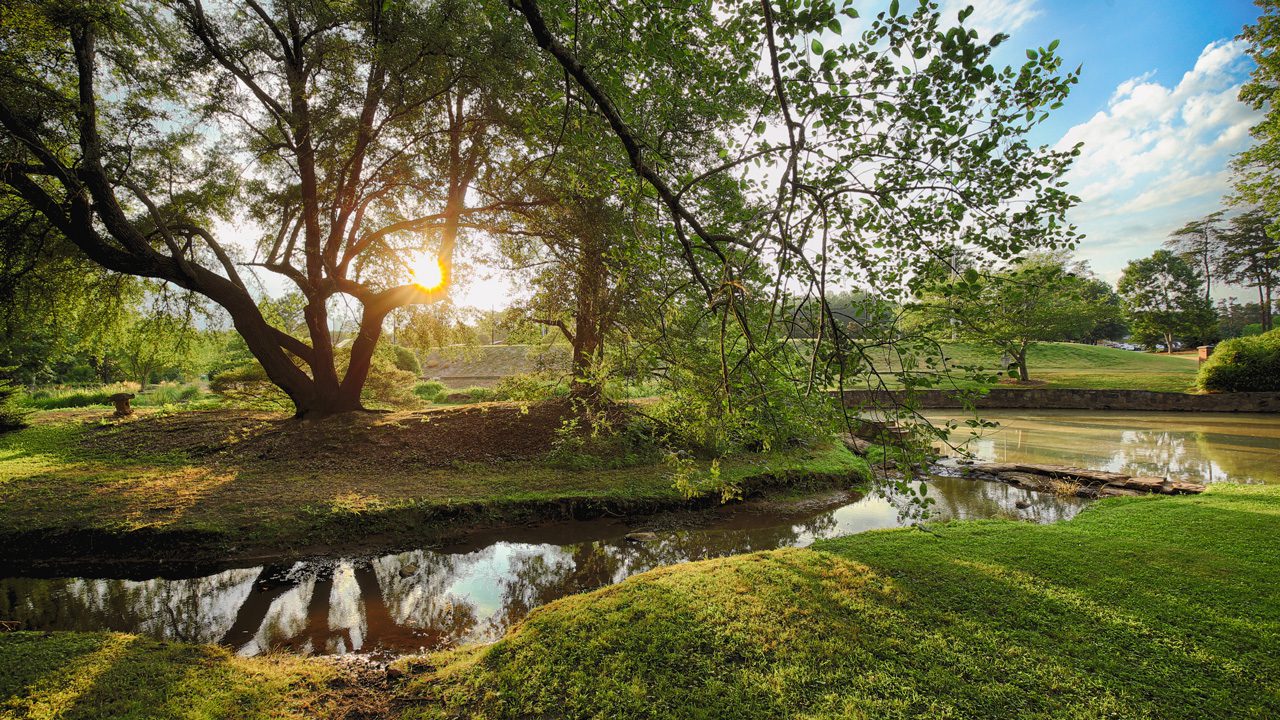In 2004, the Tsuzuki family of Nagoya, Japan offered Furman their family temple .
The temple, given the name Hei-Sei-Ji, was built in 1984 by the family for occasions such as birth celebrations and death memorials. When the Tsuzukis decided to sell their home in Japan, they approached Furman with the idea of bringing the temple to campus.
Former president at Furman University, Dr. David Shi, spoke about Furman’s decision regarding the temple, “I immediately saw this as a unique opportunity to preserve an international treasure and do so in a unique way that complemented Furman’s educational mission and our continuing role as an aesthetic and educational resource for the larger community.”
Traditionally Japanese temples are not allowed to be relocated outside of Japan. This temple is an exception because it was never assigned to a Buddhist priest to serve the local community. In 2004, the Hei-Sei-Ji temple was dismantled into more than 2,400 pieces and shipped in 4 containers across the Pacific, up the Panama Canal where it arrived in Charleston, South Carolina. The dismantled temple sat in the Tsuzuki family’s warehouse for almost four years until the money was raised for the temple’s reconstruction.
Reconstruction began on April 1, 2008, and involved bringing a team of 7 wood specialists, 4 tile specialists, and 2 plaster specialists from Japan. The entire temple was rebuilt to its original state with the exception of a few ceiling tiles that were broken when it was disassembled. These ceiling tiles were remade and shipped from Japan. Most of the wood used in the temple is keyaki, a wood native to Japan. The temple is built without the use of a single nail. The intricately crafted tongue and groove joints that correspond with Japanese philosophy hold the temple together and create a unified simplicity.
The Place of Peace became the first authentic Japanese artifact to be reconstructed in South Carolina and also the first known complete Japanese temple to be moved to the United States. Technically, the Place of Peace is not called a temple because the butsudan or shrine has been removed. Now there is a poem in calligraphy where the shrine once sat that translates into, “Blessed universal spirit, immediately we feel your presence” and serves to help focus the mind for meditation and reflection. Traditionally, Buddhist temples face south or east, but the Place of Peace is positioned northwest. This nontraditional positioning was proposed by David Shaner, Professor of Philosophy and Asian Studies. The man who designed and built the temple originally disapproved of this proposal until it was brought to his attention that if it was positioned in the traditional direction that it would face towards a parking lot. He accepted this inconsistency of tradition as long as Furman informed visitors. It is positioned to view the waterfall in the Asian Garden, the lake, and in the distance the Blue Ridge Mountains which creates a sense of harmony between the Earth, water, and landscape.
The Japanese temple was blessed and dedicated on Friday, September 5, 2008. The ceremony began with an introduction by Dr. Shi. Seiji Tsuzuki and his sister, the children of the original owners of the temple, spoke about their memories of the temple as small children in Japan. Dr. David Shaner performed the traditional blessing ceremony which uses salt to represent the elements of water and earth, and incense to represent air. This was followed by a Kagamiwari ceremony, symbolically breaking the top of the sake barrel and passing out small cedar boxes of sake for a toast.
The Japanese temple and its surroundings reflect the themes of connection and balance with nature. It is placed in a setting that promotes reflection, calmness, and spiritual well-being. This is not hindered by any artificial components such as lights, heat, or air-conditioning. Dr. Shaner talks about the course that is taught in the Place of Peace. He states, “Students will be up there at 7:20 in the morning. It’ll be dark outside. It could be snowing, and they’ll still be in there meditating. But it’s my job to teach them to use the powers of mind and awareness to sit in meditation for an hour and a half without being cold.” The temple serves as an educational tool for the Department of Asian Studies and is part of Furman’s commitment to sustainability. Sustainability can be seen in the temple’s structure since the wood pieces are designed to be taken apart so they can be repaired individually if needed. The Place of Peace promotes personal reflection and strengthening the mind-body connection.
